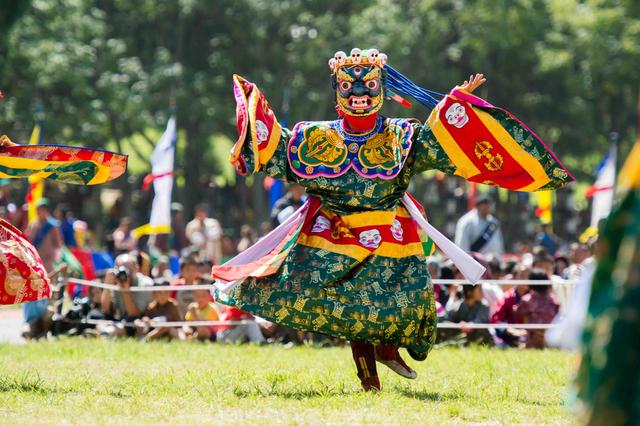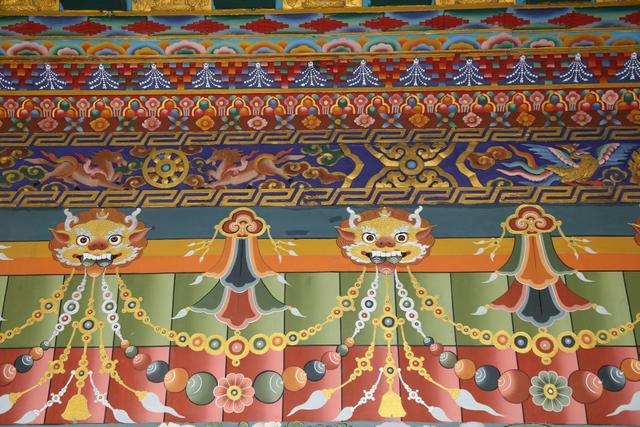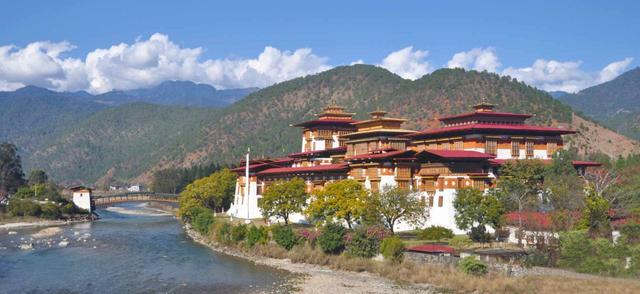Latest Articles 🎈
Popular places to stay that Chisfis recommends for youexplore wangdue phodrang - bhutan travel, asia
Wangdue Phodrang is a stunning district renowned for its untouched beauty and rich cultural heritage. This picturesque region, located just a few hours' drive from the capital Thimphu, offers travelers the perfect mix of scenic landscapes, fascinating history, and serene monasteries. With its winding rivers, lush valleys, and majestic mountains, Wangdue Phodrang is rapidly gaining popularity among visitors looking to experience authentic Bhutan. Whether you want to explore historic Dzongs, hike through pristine nature reserves, or just immerse yourself in local culture, this region has something for everyone.
Population: Approximately 9,000 in 2017.
Economy: Wangdue Phodrang's economy is primarily agriculture-based, including farming, livestock rearing, and small-scale handicrafts. Tourism also contributes significantly, driven by its cultural and natural attractions.
Landmarks: Famous for the Wangdue Phodrang Dzong, Phobjikha Valley, and the Gangtey Monastery.
explore bumthang - bhutan travel, asia
Bumthang, often referred to as the spiritual heartland of Bhutan, is a hidden gem nestled in the heart of the Himalayas. Located in central Bhutan, Bumthang is easily accessible from major cities like Thimphu and Paro, making it a must-visit destination for anyone exploring the kingdom. As one of the country’s oldest inhabited regions, Bumthang is a living testament to Bhutan’s cultural evolution, offering a window into its sacred past and vibrant present. This region is divided into four scenic valleys—Chokhor, Tang, Ura, and Chumey—each offering unique experiences, from exploring ancient temples to trekking through pristine nature.
Population: Approximately 18,000 in 2017.
Economy: Bumthang's economy is largely driven by agriculture, with buckwheat, dairy products, and honey as key outputs. Tourism and traditional crafts like Yathra weaving also play a vital role in local livelihoods.
Landmarks: Famous for the Jakar Dzong, Kurje Lhakhang, and the Jambay Lhakhang.
explorez trongsa - voyage au bhoutan, asie
Trongsa est un joyau caché du Bhoutan qui attend d'être découvert. Avec ses paysages à couper le souffle et sa profonde signification culturelle, Trongsa est bien plus qu'une simple étape en route vers l'est du Bhoutan. Stratégiquement situé sur une crête, Trongsa a joué un rôle central dans l'histoire du Bhoutan et est une destination touristique importante, offrant une beauté intacte et un riche patrimoine culturel. Elle offre aux voyageurs l'occasion de plonger dans l'histoire du royaume, entourée de vues montagneuses spectaculaires et du charme intemporel de l'architecture traditionnelle bhoutanaise.
Population : Environ 20 000 habitants en 2017.
Économie : L'économie de Trongsa repose principalement sur l'agriculture, les habitants cultivant des cultures telles que le riz et le maïs. Le tourisme joue également un rôle clé, soutenu par son histoire riche et sa signification culturelle.
Monuments : Célèbre pour le Trongsa Dzong, le Ta Dzong et le Chorten de Chendebji.
explore punakha - bhutan travel, asia
Nestled in the lush valleys of the Himalayas, Punakha is a destination that captivates every traveler with its breathtaking beauty and deep-rooted cultural heritage. Once the capital of Bhutan, this serene town offers the perfect escape for those seeking both tranquility and adventure. The landscape is dominated by green terraced rice fields, winding rivers, and the stunning Punakha Dzong—a fortress that stands as a symbol of Bhutanese architecture and history. Whether you’re a history enthusiast, a nature lover, or a spiritual seeker, Punakha is a treasure trove of experiences waiting to be discovered.
Population: Approximately 28,700 in 2017.
Economy: Punakha's economy is primarily based on agriculture, with rice and livestock farming being key contributors. Tourism also plays a growing role, thanks to its historical landmarks and natural beauty.
Landmarks: Famous for the Punakha Dzong, Chimi Lhakhang (or Temple of Fertility), and the Punakha Suspension Bridge.
explorez paro - voyage au bhoutan, asie
Réputée pour son histoire riche, ses sites spirituels et ses paysages à couper le souffle, cette ville de vallée est une destination prisée par les voyageurs en quête de sérénité et d’aventure. Paro abrite certaines des attractions les plus emblématiques du Bhoutan, notamment des monastères perchés sur des falaises, d’anciennes forteresses et des sentiers de randonnée pittoresques. Que vous soyez passionné de culture, amateur de nature ou en quête de spiritualité, Paro offre une expérience de voyage unique où traditions et modernité se rencontrent de la manière la plus captivante.
Population : Environ 35 000 habitants en 2021.
Économie : L'économie de Paro repose principalement sur le tourisme, l'agriculture et les petites industries. La ville tire parti de ses sites culturels, attirant des visiteurs et stimulant l'hôtellerie locale ainsi que l'artisanat.
Sites emblématiques : Célèbre pour le monastère du Nid du Tigre (ou Paro Taktsang), le Rinpung Dzong et le Kyichu Lhakhang.
Explorer le monde 🎯
Catégories les plus visitées
Bhutan
Toutes les catégories




